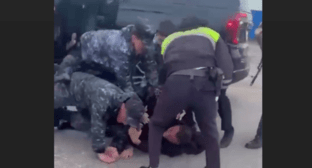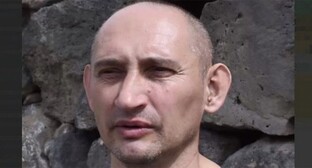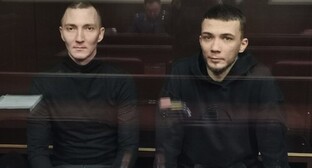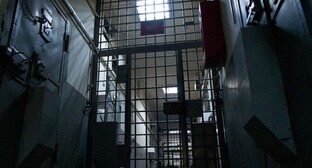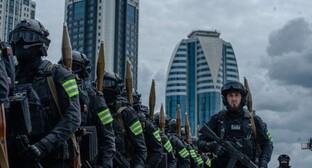09 November 2003, 13:47
"Individuals of Caucasian ethnicity" in post-Soviet Russia: origins of ethnic negativism
The collapse of the USSR, a multinational totalitarian state, passed down a very challenging ethnopolitical heritage. The post-Soviet area is a huge multicultural zone. It is becoming more and more obvious that efficient inter- and intra-cultural communication, self-understanding of the increasingly complicated society requires focusing on the cognitive, expert and managerial functions of ethnology.
Many dramatic periods in national history were predetermined not only by suppressing civil liberties, but also ignoring ethnicities' needs, feelings and moral quests. This situation preserved for decades as a government ideology had shaped a natural and positive urge towards ethnic origins as soon as it was possible. However, it cannot be denied that the common symptom of the present in Russia and all the former Soviet republics is popularity and even "respectability" of national-patriotic ideas with their typical idealization of the ethnic majority and increased critical attitude to the minority.
The covertly escalated misbalance of values made it an ordinary thing what seemed so impossible until quite recently: open interethnic conflicts. Methods developed in sociology and political science are already not enough to reflect the whole scope of social and ethnic problems of the society undergoing extreme transformation. The fragmentariness or more often complete absence of the simplest ethnographical knowledge in many respects contributed to the exacerbation of interethnic mistrust, increase in alienation and mutual antipathies. In conditions of socioeconomic and ideological cataclysms, reinforced with methods of manipulative propaganda, this situation is often expressed in a morbid search for an "alien-enemy." This can be both an individual ethnicity and the population of an entire area.
It is established that anti-Caucasian attitudes take first place in ethnic negativism in Russia (1). No doubt, the events in Chechnya contributed to this a lot, illustrating above all the sad result of using ethnic ambitions and nationalistic movements for "national revival" and "purity of the national idea and religion" for political purposes.
The collective image of "individuals of Caucasian ethnicity" is in fact a new, imposed or forced ethnic stratification. Its formation and operation is linked to negative sociopolitical changes in the country. At the ordinary perception level, this newly-invented social phenomenon includes a visual anthropological characterization, some "typical" elements of moral consciousness, an image, stereotypes of practical behavior, corresponding behavioral responses and so on. It is no secret all this has a strong and quite definite emotional tint.
The mentioned stratification was taking shape and presently exists in conditions of regional-ethnic aversion. Despite the fact that the ethnopolitical majority's ordinary lack of knowledge of the differences between the peoples of the Caucasus has already been overcome, "individuals of Caucasian ethnicity" are unlikely to be stereotyped as differentiated subjects. The "Caucasians" are as before viewed as something monolithic and for this reason, even more dangerous. On the whole, it will not be a great exaggeration to say that isolationist moods are a common symptom of the new "style" in solving many ethnic, political and social problems in their most various manifestations. All this predetermines an acute need for professional ethnological research developing experience of resolving interethnic conflicts.
Simple analysis of a set of public consciousness stereotypes enables revealing the logic of their emergence as part of those realities that substitute the state's nationalities policy.
The emergence and functioning of realities such as ethno-social stereotypes must be studied not only in connection with the economic and political, but also with the historic foundation of social development. The fact of ethnic alienation suggests an active search for precedents in historic memory. When they are uncovered, the historic past and the extant political situation become mixed-up in the mass ethnic consciousness. The identification of the historic experience and the present-day political reality conceptualizes interethnic discontent.
An emotionally negative, standardized idea of Caucasians was consistently taking shape during quite a lengthy period of time. The original negative image of a Caucasian in the eyes of the ethnopolitical majority was predetermined by the 1817-64 Caucasian War that lasted for almost half a century. This was mirrored in the press of the period and even much later when Caucasian topics were not treated otherwise than in sections titled "In the land of abreks [abrek - a mountain dweller taking part in struggle against the czar's troops and administration in the period when the Caucasus was annexed to Russia - trans.] and thieves," "In wild parts," "Barbarian customs and traditions," and so on; as well as in works by Mikhail Lermontov, Lev Tolstoy, partially Alexander Pushkin and so on. Remember the "evil Ossetian bullet," "evil Chechen," "severe Circassians," the mountain people's "thirst for battle" and "greedy battle" and so on - all this had quite an efficient and definite impact on mass consciousness.
Literary plots reproduce a lot of situations rendering ethnic stereotypes and reconstructing the ethnic character, living "programs" of some or other ethnicities and their socio-cultural attitudes which included ideas and evaluations based on historic, in this case oppositional, realities. Alexander Pushkin in his poem Tazit quotes a Circassian cursing his son for what he thought insufficient courage as follows:
"вРНА ДЕРХ ПСЯЯЙХУ ДЕПЕБЕМЭ
рЕАЪ БЕПЕБЙНЧ ЯБЪГЮКХ
х, ЙЮЙ БНКВНМЙЮ, ГЮРЕПГЮКХ".
["May children in Russian villages
Bind you with a rope
And torture you like a wolf cub."]
Poetry is informational-esthetic experiencing of the world that not as much refers to individual aspects as the wholeness of the human nature, national culture and mentality. Therefore, stereotypes in verses and literary works in general can be subject to historic-anthropological research. More so, that art in its specific forms reflects the system of values in the culture the author belonged to.
A Pushkin character ("Prisoner of the Caucasus") admires the mountain people's courage and sympathizes with their independence fight. In the epilogue, the poet himself exclaims:
"йЮБЙЮГЮ ЦНПДШЕ ЯШМШ,
яПЮФЮКХЯЭ, ЦХАКХ БШ СФЮЯМН".
["Proud sons of the Caucasus,
You fought and died horribly."]
Alexander Pushkin obviously admires mountain people's courage, their martial daring, their everyday life and hospitality:
"лЕФ ЦНПЖЕБ ОКЕММХЙ МЮАКЧДЮК
хУ БЕПС, МПЮБШ, БНЯОХРЮМЭЕ,?
цНЯРЕОПХХЛЯРБН, ФЮФДС АПЮМХ,
дБХФЕМХИ БНКЭМШУ АШЯРПНРС,
х КЕЦЙНЯРЭ МНЦ, Х ЯХКС ДКЮМХ.
..............................................
б ЦНПЮУ ОСЯРШММШУ ГЮОНГДЮКШИ
й МЕЛС БНИДЕР ОПХЬКЕЖ СЯРЮКШИ
х ПНАЙН ЯЪДЕР С НЦМЪ, -
рНЦДЮ УНГЪХМ АКЮЦНЯЙКНММШИ
я ОПХБЕРНЛ, КЮЯЙНБН, БЯРЮЕР".
("йЮБЙЮГЯЙХИ ОКЕММХЙ")
[Amidst the mountain people the prisoner observed
Their religion, customs, breeding,?
Hospitality, thirst for battle,
Their free movements' quickness,
Their legs' lightness and their arms' strength.
..............................................
Belated in desolate mountains,
A tired stranger would come to him
And coyly sit to the fireplace -
Then the benevolent host
With a welcome, blandly stands up
("Prisoner of the Caucasus")]
However, the "mechanism" of an ethnic conflict is that under the influence of social and political circumstances positive properties change their emotional tint and are replaced by negative, accusing ones. Thus, "proud" turns into "haughty," "courageous" into "cunning" and so on. As far back as in 1941, D. Sito established that before Japan's attack on Pearl Harbor Americans' stereotypical ideas of the Japanese had included qualities such as "polite," "ambitious" and "observing traditions"; after this event, they were replaced by "lying," "nationalistic," and "cunning" (2).
The reinforcement of the negative stereotype in the Soviet period is in many respects linked to the "dethronement of the personality cult" of Joseph Stalin and activities of Lavrenti Beria. This quite efficiently promoted negative generalizations derived at the everyday life level. Thus, Osip Mandelshtam mentions Stalin's "huge moustache" and "broad Ossetian chest" among his odious qualities. Nevertheless, the fact that the "father of the united family of the Soviet peoples," was an ethnic "Caucasian" for quite a long period predetermined and supported positive stereotypical attitudes to the peoples of the North Caucasus and Transcaucasia. This was manifested in propagandistic realities of the Stalin-era mass culture, in particular super-popular movies like The Pig-Tender and the Shepherd where the highlander is wise, hard-working and open-hearted; and partially like Volga-Volga where the heroine, performed by the first Soviet movie star Liubov Orlova, enthusiastically and very skillfully performed lezghinka [a national Lezgin dance - trans.] and so on.
Stereotypes are simplified perception of ethno-social processes. It is at this level that any ethnic bias is formed, the outer "boundaries" of the standardized behavior of representatives of some or other ethnic groups, in particular the collective image of a "Caucasian." The last vivid positive Caucasian character probably appeared before Soviet spectators in the movie Soldier's Father. Soon after this, the Caucasian toiler forever gives way to the Caucasian swindler, dodger or at best just not too smart person. Comrade Saakhov from the movie "Prisoneress of the Caucasus" is probably the most innocent figure in a series of new and increasingly more popular characters of sly and predatory Caucasians. Originally presented in a comic and unobtrusive form, later on this figure also became established in other genres. Attempts have been made since very recently to portray the Caucasians in the most vulgarly exaggerated form as hostile foreigners and almost genetic bandits.
One more aspect of the emergence of ethnic negativism was formed by processes of a quite another nature. Ethnicities can exist in relations of equal competition or cooperation. This fact in itself is not at all fraught with any immediate interethnic sympathies or antipathies. The job of marketplace traders in the USSR had a low moral status. Meanwhile, natives chiefly of Transcaucasia, whom the ordinary, stereotypical consciousness identifies indiscriminately as "Caucasians," chose trade, private enterprise which is so shameful in the eyes of Soviet people as their economic niche, for which they were called "operators," "jobbers" and the like. Typical collisions between the seller willing to overstate the price and the buyer in this case also acquired the form of ethnic discontent. The fact that not all Caucasian peoples took part in such activities was of no importance, so it could not in any way affect the development of the negative stereotype of the collective "Caucasian." At the same time, there was a protest against the situation of the late Soviet period taking shape in the individual and public consciousness that was becoming increasingly aware of it. In these conditions, there was a rise in critical attention to the material well-being of "dodgers," "wheeler-dealers" and so on, Caucasians among them. Thus, the protests against the system could not help but be manifested in rising moods of ethnic alienation, primarily at the level of stereotypes. Grotesque with their huge cloth caps and noses, sellers of flowers and fruit, dull ill-starred ladies' men and so on emerged in all manifestations of mass culture, including anecdotes. An element of parody intensified the negative evaluation. Mockery is a form providing an efficient tool of the alleged depreciation of the social status of those characterized by non-Soviet properties and besides, an alien ethnicity. Universal rules of ethnic portrayal suggest using positive or negative cliches. This does not only reflects but in many respects also shapes the further negative development of the emotional and evaluative element in the philistine concept of "individuals of Caucasian ethnicity."
A rise in the critical attitude towards Caucasians was later on promoted by the fact that they in part already occupied some profitable spheres in drastically altered economic and political circumstances. In this case though, it would be casuistic to suppose ethnically unequal distribution of a certain "market-like" proclivity or more so, the existence of certain rights to monopoly in any sphere of labor.
Realities of late include a worse crime situation in Russia and a rise in criminal activities of various "ethnic gangs." It cannot be denied that the stereotype of an enemy, which is approximately the same for all nations (this is primarily an alien aggressor and a criminal, evil incarnate), has become a powerful factor consolidating the social consciousness of the ethnopolitical majority. In such circumstances, the alien ethnicity factor at the level of mass consciousness stimulates extrapolating the whole scope of negative roles typical for the new time to a definite "Alien," primarily to "individuals of Caucasian ethnicity." Some realities are viewed as specifically ethnic, with the certain conclusion: "they're all like that." In such cases, emphasis is laid on the most visible (i.e. "abnormal," going beyond the usual limits) elements of behavior of the ethnic minority. Therefore, if there are criminals, marketplace traders, musicians, professors and so on among some "aliens," traders and gangsters will be noticed first. Yet it is the ethnic minority as a whole that becomes subject to hostile attitude. The philistine consciousness pins the stereotype of an enemy in its socio-consolidating meaning on the entire ethnicity.
Deliberately or not, the media contributed to stepping up the stereotype of the "Caucasian" as an enemy by providing information with strong evaluative comments that not as much described and analyzed events as emphasized problems. Orientation towards readability, which means sensation, predetermined journalists' proclivity to snatching and replicating facts of criminal activity just among Caucasians, although they are unlikely to exceed the "average figures" of other ethnic gangs in crime statistics. It is clear that in conditions of a serious crisis of the state, criminal clans to a certain extent begin to substitute the functions of institutions of socialization. However, corporate mutual aid that can be found in such social formations is viewed and interpreted as entirely ethnic specifics.
The widespread conviction of scarcely not innate, genetic aggression of "individuals of Caucasian ethnicity" was to a great extent facilitated by the well-known cult of strength, courage and war-like ethos of the mountain people in the North Caucasus, which was popularized from the XIX cent. The trouble is that at the philistine level of stereotypes it is hard to perceive this cult has nothing in common with methods of terrorist warfare and gang activities, but on the contrary comes into a direct conflict with them.
Caucasian ethnic minorities are socially mobile in a foreign ethnic environment. In Russian cities, Caucasian communities are inwardly consolidated, they preserve their cultural isolation and their hierarchy of values for decades, which is the natural adaptive reaction of any ethnic minority, its adjustment to life among the ethnopolitical majority. Caucasians' insignificant proclivity towards assimilation is sometimes interpreted as the manifestation of definite arrogance or contempt, which makes the degree of ethnic alienation and negativism with respect to them considerably stronger.
Belonging to their history and culture with corresponding elements of moral consciousness and behavioral stereotypes, "Caucasians" contribute to the reproduction in the present-day cultural context of some patterns of behavior dating back to the traditional past and in many respects lost by the industrial society. This disagrees with corresponding cultural realities of large Russian cities with their population living beyond their own ethnic culture, unfocused on its reproduction. In this light, attributes of the minority culture acquire a negative meaning.
The existence of the problem treated above suggests the need for further ethnological research of realities such as a person's ethnic make-up, ethnic mentality, ethnic stereotypes and processes of their construction and influence on the dynamics of interethnic relations. By studying these processes, first steps are taken to facilitate socio-ethnic stabilization in the post-Soviet society so rich in conflicts.
NOTES
(1) P. Cherkasov, "Individuals of Caucasian Ethnicity" as seen by the Muscovites // Socio-cultural and Ethnic Stereotypes. Moscow, 1998. - pp. 62-71.
(2) Opus cit. - p. 62.
Author: Alina Khadikova, Vladikavkaz Institute of Management
